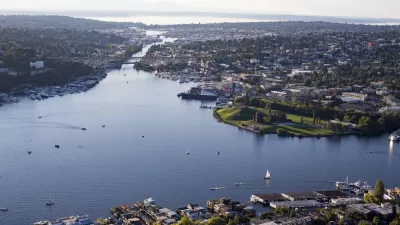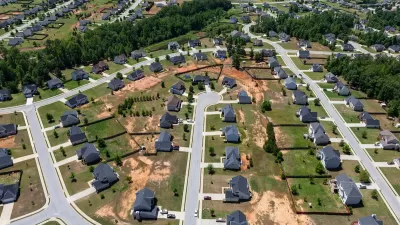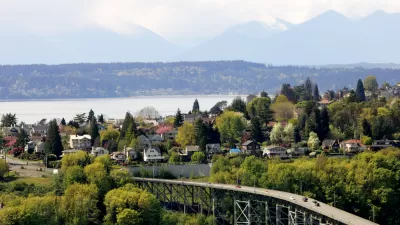A proposed bill in the Washington state legislature that would legalize more multi-family housing in the state could add hundreds of thousands of units to the state's strained housing stock.

A proposed bill in the Washington state legislature would open the door to more "missing middle housing" in the state, reports Dan Bertolet. "A new bill would not only help correct the historic injustice of zoning laws originally enacted to exclude Black families, but also would relieve the root cause of Washington’s housing crisis: a shortage of homes."
The law would lift local laws that ban multi-family buildings, legalizing denser housing based on its location, local population, and proximity to transit. Based on a California study, this could lead to the construction of more than 200,000 units in Washington. "For a second comparison, a recent University of Washington report estimated that legalizing fourplexes within a quarter-mile of transit stations would create capacity for nearly half a million more homes in the Puget Sound region, which is home to 4.3 million of the state’s 7.6 million residents."
The proposed bill would also limit parking requirements to reduce the cost of construction and encourage multi-modal transportation and transit use. Further, the bill attempts to prevent displacement by requiring citied to adhere to the anti-displacement standards enacted by the state in 2021.
According to the source article, linked below, Washington's proposed legislation differs in key ways from similar laws in California and Oregon, notably by permitting six-unit buildings near transit. While it excludes unincorporated areas and gives cities a minimum density alternative that could let some localities perpetuate exclusionary zoning, the bill has the potential to create hundreds of thousands of new homes for Washingtonians.
FULL STORY: WASHINGTON BILL WOULD LEGALIZE HUNDREDS OF THOUSANDS MORE HOMES

Maui's Vacation Rental Debate Turns Ugly
Verbal attacks, misinformation campaigns and fistfights plague a high-stakes debate to convert thousands of vacation rentals into long-term housing.

Planetizen Federal Action Tracker
A weekly monitor of how Trump’s orders and actions are impacting planners and planning in America.

Chicago’s Ghost Rails
Just beneath the surface of the modern city lie the remnants of its expansive early 20th-century streetcar system.

Bend, Oregon Zoning Reforms Prioritize Small-Scale Housing
The city altered its zoning code to allow multi-family housing and eliminated parking mandates citywide.

Amtrak Cutting Jobs, Funding to High-Speed Rail
The agency plans to cut 10 percent of its workforce and has confirmed it will not fund new high-speed rail projects.

LA Denies Basic Services to Unhoused Residents
The city has repeatedly failed to respond to requests for trash pickup at encampment sites, and eliminated a program that provided mobile showers and toilets.
Urban Design for Planners 1: Software Tools
This six-course series explores essential urban design concepts using open source software and equips planners with the tools they need to participate fully in the urban design process.
Planning for Universal Design
Learn the tools for implementing Universal Design in planning regulations.
planning NEXT
Appalachian Highlands Housing Partners
Mpact (founded as Rail~Volution)
City of Camden Redevelopment Agency
City of Astoria
City of Portland
City of Laramie





























